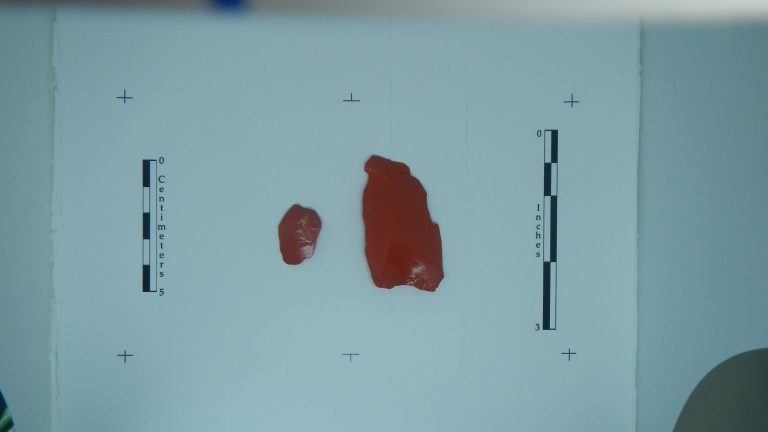Inadvertent Discovery Plan
An Inadvertent Discovery Plan (IDP) is required to address the potential of the unanticipated discovery of human remains as well as historic or prehistoric cultural resources. This plan provides directions for the on-site project staff on who to contact, and how to secure an area, if ground-disturbing activities unearth an unanticipated discovery. Development and use of an IDP reduces risk and liability. This plan is used for monitoring projects, projects with limited surface visibility, and is required by some state and local agencies.

The Process
This process may be initiated in a few processes. A Cultural Resource Survey may identify the need for an IDP due to a high likelihood of resource discovery or a lack of subsurface visibility. IDPs may also be required by state and federal funding agencies or upon Tribal request. Once this is initiated, a background review of the project area will be conducted, and a discussion of those findings and the subsequent findings will be used to create an outline for project parameters. This is largely dependent on legislative regulations and the level of archaeological participation in the project (how much time if any that an archaeologist will be on the project site. This plan will include specific directions that need to be followed for proper handling in the event that cultural resources are uncovered. This will include all necessary contacts and protocols to follow for any discoveries.
1.
IDENTIFY THE NEED FOR AN IDP
2.
CONDUCT BACKGROUND REVIEW
3.
CREATE AN OUTLINE FOR PROJECT PARAMETERS
Who Needs It?
Projects with federal and state requirements: Projects with a high likelihood of cultural resources: Projects with low subsurface visibility.
FAQ
Yes, they are as follows:
Washington State:
The State Environmental Policy Act (SEPA) requires that state agencies consult with the State Historic Preservation Officer (SHPO) or Tribal Historic Preservation Officer (THPO) as appropriate to help identify the area of potential effect (APE) and the level of effort necessary to comply. This is intended to be done prior to expenditures or issuance of a license or permit.
Chapter 27.44 of the Regulatory Code of Washington offers protection for Indian burials, cairns, glyptic markings, and historic graves on private and public property. This regulation provides civil and criminal penalties for the intentional disturbance or removal of these types of properties.
Chapter 27.53 of the Revised Code of Washington requires that a permit be acquired through the Washington State Department of Archaeology and Historic Preservation (DAHP) prior to the intentional disturbance, excavation, removal, or alteration of any known historic or archaeological resource through any means.
Chapter 68.50 of the Regulatory Code of Washington describes the investigations, treatment, scientific study, and final disposition of human remains. This chapter includes very little information that pertains to the inadvertent discovery of archaeological materials.
Chapter 68.60 of the Regulatory Code of Washington outlines protections for cemeteries, historic graves, and other human remains. This chapter further outlines procedures pertaining to the inadvertent discovery of human remains. State of Oregon:
Chapter 97.740 – 97.760 of the ORS offer protection for Indian burials, cairns, funerary objects, objects of cultural patrimony, sacred objects, and human remains. The regulation provides civil and criminal penalties.
Chapter 358.905 – 358.961 defines archaeological sites and objects and requires that a permit be acquired prior to the intentional disturbance, excavation, removal, or alteration of any known historic or archaeological resource through any means on private or public property. Also provides instructions for the discovery of human remains.
State of Idaho:
Idaho Code, Chapter 41, 67-4114, was enacted to identify, preserve, and protect historical sites, monuments, and points of interest with the State of Idaho.
Idaho Code, Chapter 41, 67-4118, willful, intentional, or reckless damages, molests, disturbs, destroys, or harms any archaeological site, historic site, or monument shall be liable civilly to the State of Idaho by way of penalty in a sum equal to triple the amount of the cost and expense of repairing, replacing, and reconstructing said site.
Idaho Code, Chapter 41, 67-4119, excavations within lands owned by the State of Idaho, in accordance with the provisions of Chapter 181, Idaho Session Laws, 1963, require an archaeological excavation permit.
If ground-disturbing activities encounter human skeletal remains during construction, all activity that may cause further disturbance to those remains must cease. The area of the find should be secured and protected from further disturbance until the State provides notice to proceed. The finding of human skeletal remains must be reported to the county medical examiner/coroner and local law enforcement in the most expeditious manner possible. The remains should not be touched, moved, or further disturbed. The county medical examiner/coroner will assume jurisdiction over the human skeletal remains and make a determination of whether those remains are forensic (a possible crime scene) or non-forensic (an archaeological resource). If the county medical examiner/coroner determines the remains are non-forensic, then they will report that finding to the Department of Archaeology and Historic Preservation (DAHP) who will then take jurisdiction over the remains. The State Historical Preservation Officer (SHPO) will notify any appropriate cemeteries and all affected Tribes of the find. The State Physical Anthropologist will make a determination of whether the remains are Indian or Non-Indian and report that finding to any appropriate cemeteries and affected Tribes. The DAHP will then handle all consultation with the affected parties as to the future preservation, excavation, and disposition of the remains.


